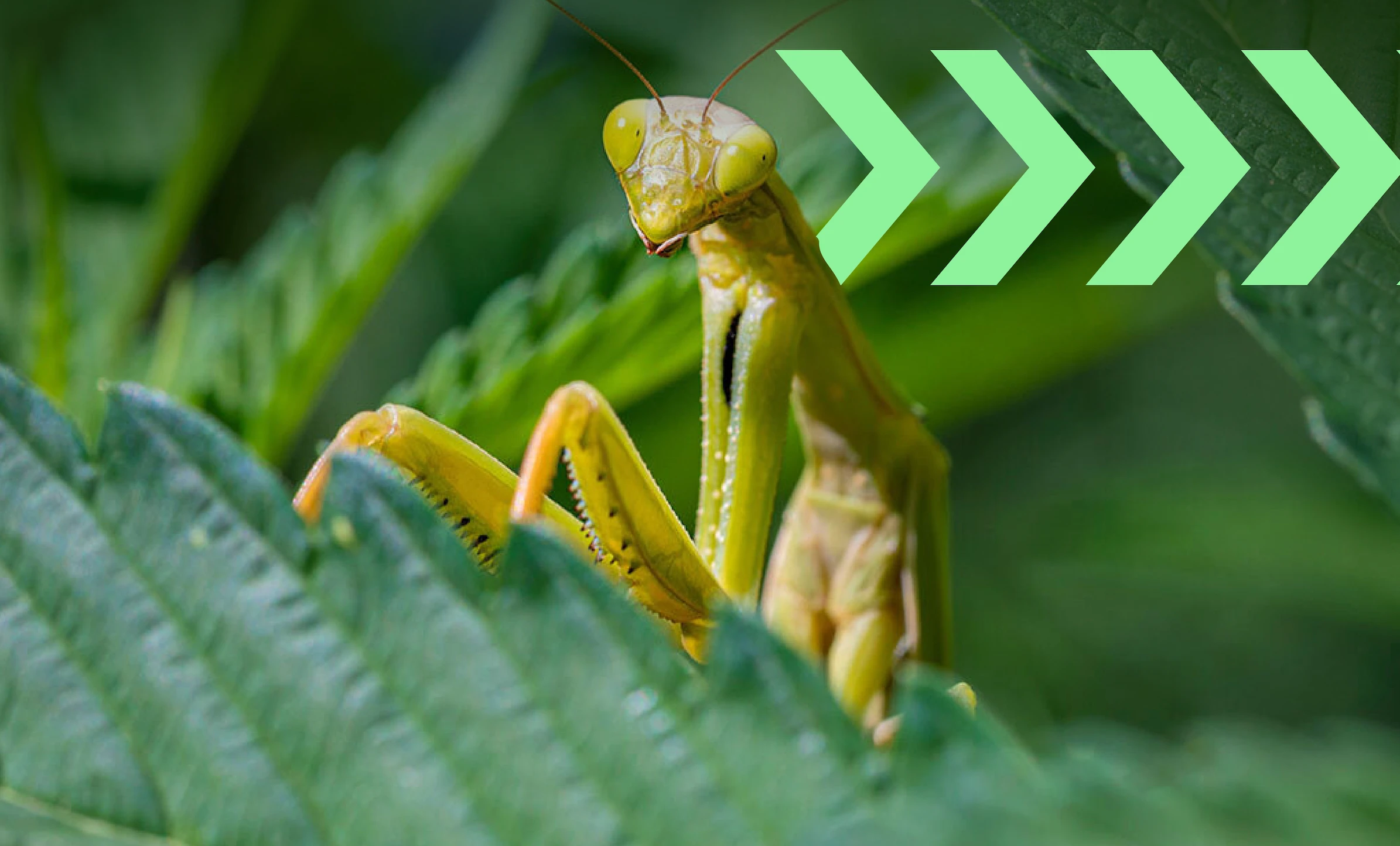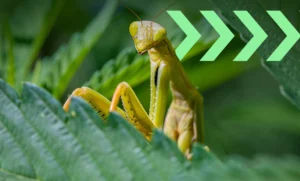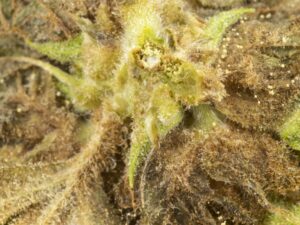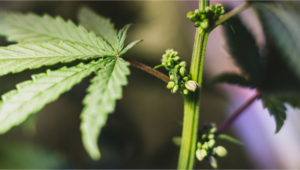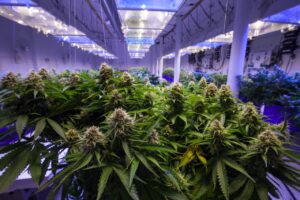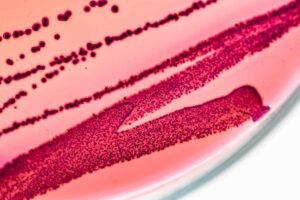IPM (Integrated Pest Management) is a method of pest and pathogen control that prioritizes non-chemical solutions to preventing, controlling, and eliminating destructive species. Growers who practice IPM often focus on long-term prevention strategies by managing the ecosystem and creating an environment that is unfavorable for pests and pathogens. Since many jurisdictions prevent cannabis and hemp cultivators from using pesticides, IPM is the best way for them to control pests and pathogens.
There is no one size fits all IPM program, but most programs follow these core principles:
- Identification and Monitoring
- Setting Action Limits
- Prevention
- Control
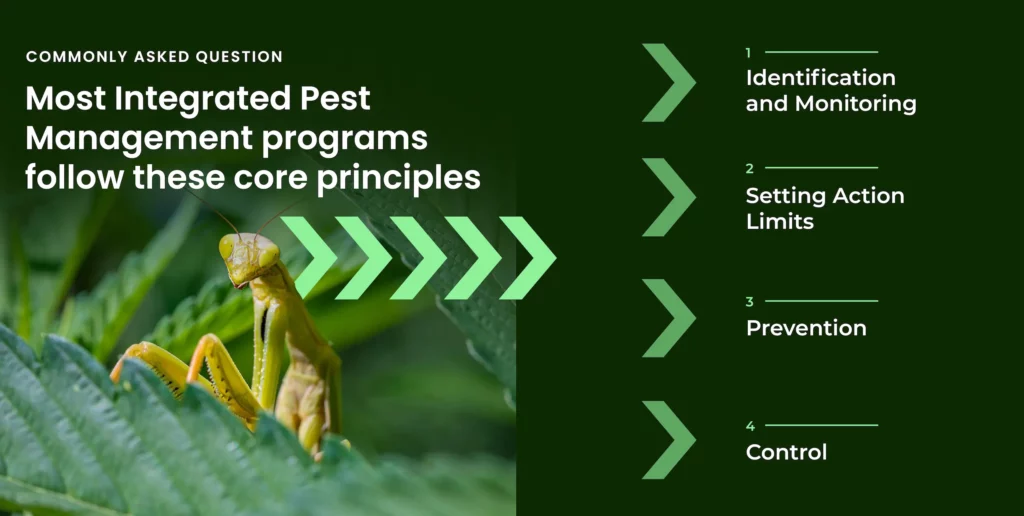
Identification and Monitoring
To be successful in IPM, one must know the enemy. Not all organisms are harmful. In fact, some may be beneficial. For example, ladybugs can be helpful in controlling spider mites, and Bacillus is a beneficial bacteria that stimulates plant growth and prevents pathogenic infections.
Growers should become familiar with the common pathogens and pests that affect cannabis plants. They must also become skilled at spotting the symptoms of pest or pathogens infection and ruling out other causes of damage or necrosis, such as environmental conditions, nutrient deficiencies, poor drainage, etc.
Insects
Insects can be identified visually using the naked eye or with the assistance of magnification. There are resources available online to help with species identification, including bugguide.net and iNaturalist. It’s a good idea to confirm identification using two or more sources. It is also wise to invest in attending educational webinars and workshops to learn how to properly identify common pests.
Plant Pathogens
Plant pathogens may be more difficult to identify visually because many pathogens can produce similar symptoms. For example, both Fusarium and Pythium species can cause crown and root rot. Other pathogens cause very distinct symptoms, such as white “powder” that appears on cannabis plants affected by powdery mildew. Additionally, plants that are infected with Hop Latent Viroid may not show any obvious symptoms until late into flowering, when buds appear small and lacking in trichomes.
Pathogen-specific qPCR detection assays can be helpful in identifying the cause of a sick plant and also identifying infections before symptoms emerge. Growers can use PathoSEEK qPCR Plant Pathogen Assays to detect a wide range of cannabis pathogens, viruses, and viroids.
Setting Thresholds
IPM practitioners must establish an action threshold, which is a point when pest or pathogen populations become detrimental to plant health, yield, or profits.
The thresholds will be species-dependent as it’s not always necessary to take action when one pest or pathogen is identified. For example, most states or jurisdictions set acceptable limits of mold or bacteria in a cannabis or hemp sample. Growers can use the limit in their state or jurisdiction to set thresholds in their facility and ensure they do not fail compliance testing.
On the other hand, a plant pathogen like Fusarium can easily spread throughout a grow and cause plant death. Therefore the threshold for Fusarium should be set very low. Once identified, growers should take steps to remove infected plants immediately and sanitize thoroughly.
Prevention
Cannabis is not necessarily more likely to acquire disease or pests than other plants. However, growers can reduce the likelihood that a plant will acquire a disease by controlling environmental conditions, using cultivation best practices, and selecting resistant genetics.
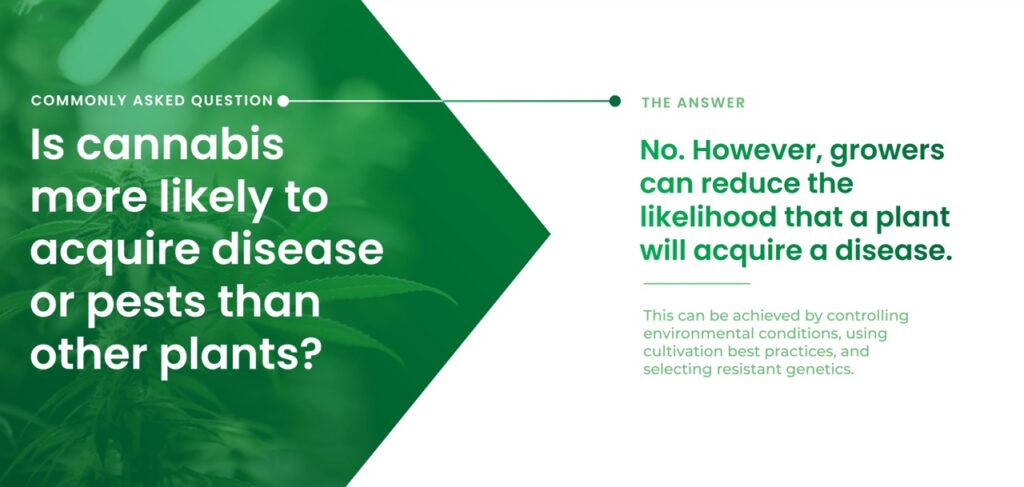
Environmental Conditions
Any variation from the ideal circumstances for cannabis plants can make them more susceptible to illness. For example, high humidity levels can foster fungal infections such as powdery mildew and botrytis. Similarly, inadequate soil drainage can make plants prone to root diseases like Fusarium and Pythium.
Cultivation Practices
Cannabis’ susceptibility to illness can also be influenced by its cultivation method. Overcrowding plants, for example, can block air circulation, making it easier for fungal infections to take hold. Overwatering or underwatering can stress the plant, reducing its natural defenses and making it more susceptible to diseases. Furthermore, poor sanitation methods, such as using contaminated instruments, can disperse disease throughout the production area. In fact, inadequately sterilized tools are thought to be one of the primary modes of transmission of Hop Latent Viroid.
Genetic Factors
The genetic makeup of cannabis plants plays a significant role in their disease resistance. Some cannabis cultivars may possess natural resistance or tolerance to certain diseases, while others may be more susceptible. In fact, it’s not uncommon for cannabis growers to observe sick plants of one cultivar directly next to another cultivar that is unphased. Breeders often select for disease resistance traits when developing new cultivars to mitigate the risk of infections.
Control
When prevention measures fail and action thresholds are exceeded, growers need to take action. The type of action will depend on the enemy. For example, plants that are infected with Hop Latent Viroid should be removed from the growing area immediately. Some growers have used meristem tissue culture to create viroid-free plants, but it is a laborious process that should be reserved for cases where an entire strain is in danger. In most cases, the best course of action is to discard the infected plants.
If the enemy is mold or bacteria, growers may deploy various fungicides and biocontrol agents that are compliant with most jurisdictional requirements. The Medicinal Genomics team has compiled a list of Biological Pesticides for Cannabis Cultivation, which includes information about 48 different products.
Growers who have a more pervasive problem may want to contract with a company that specializes in sanitation and pathogen control, such as CLEANTheory.
Ready to Start Testing Cannabis Plants for Diseases?
Several commercial producers have invested in qPCR technology and supplies to conduct in-house tests for a variety of targets, such as plant pathogens, plant sex, and microbial contaminants.
PathoSEEK qPCR Detection Assays can detect plants infected with expensive pathogens before they exhibit any visible symptoms of disease. From there, farmers can:
- Destroy the affected plant before the disease spreads
- Treat the plant with biocontrol chemicals
- Attempt to make a disease-free replica of the plant via tissue culture
Screening plants with PathoSEEK qPCR Detection Assays in-house costs less than $8 per target, not including equipment costs. Growers who are not ready to invest can outsource testing to labs that provide plant pathogen testing as a service. Services for cannabis pathogen testing can range in price from $25 to $50 per plant, depending on the pathogens. Fill out the form below, and we’ll be pleased to put you in touch with one of those labs!

